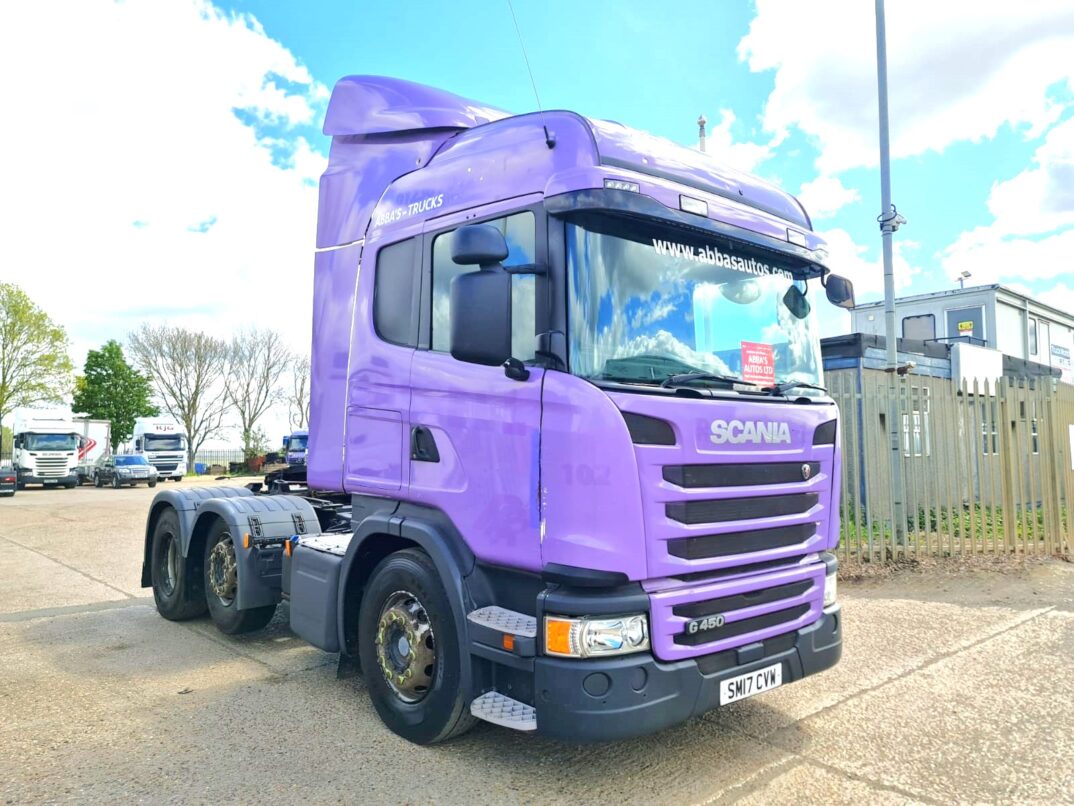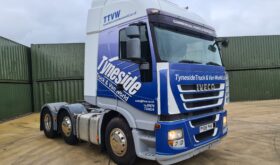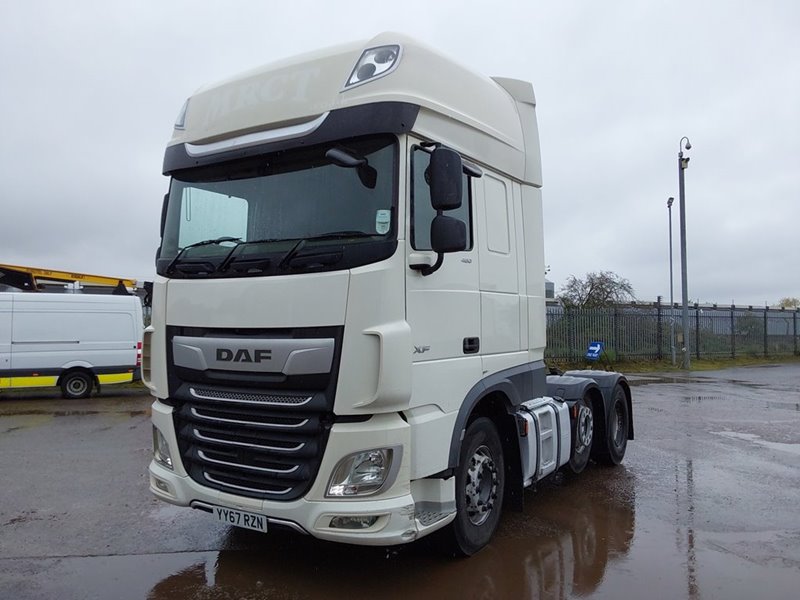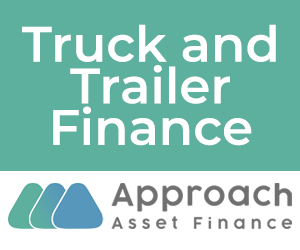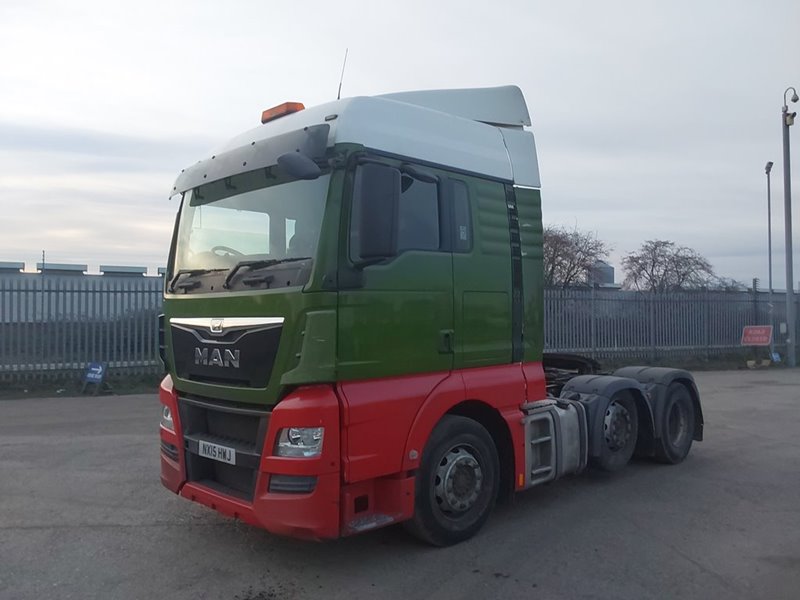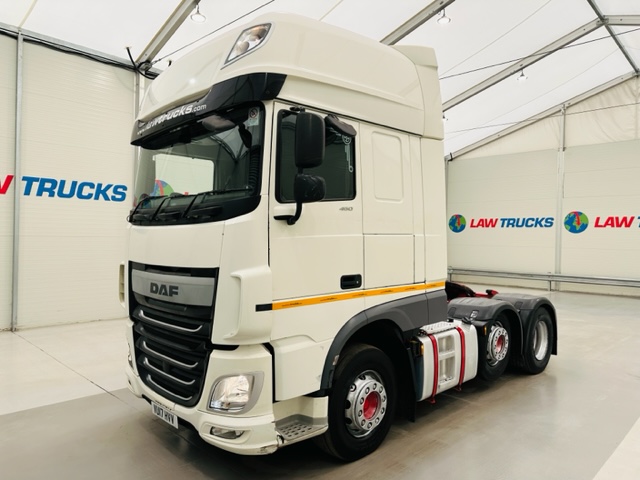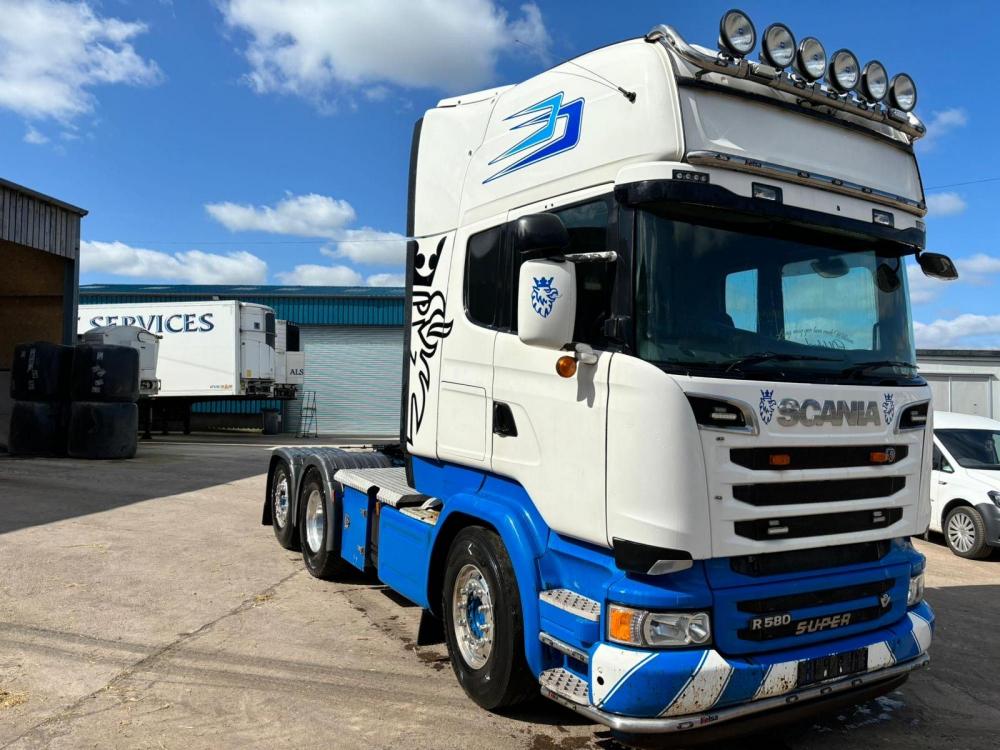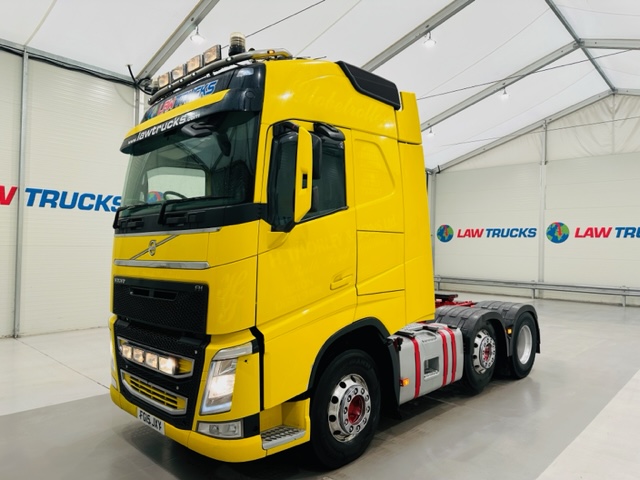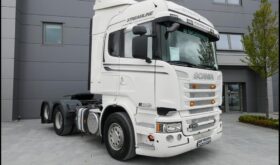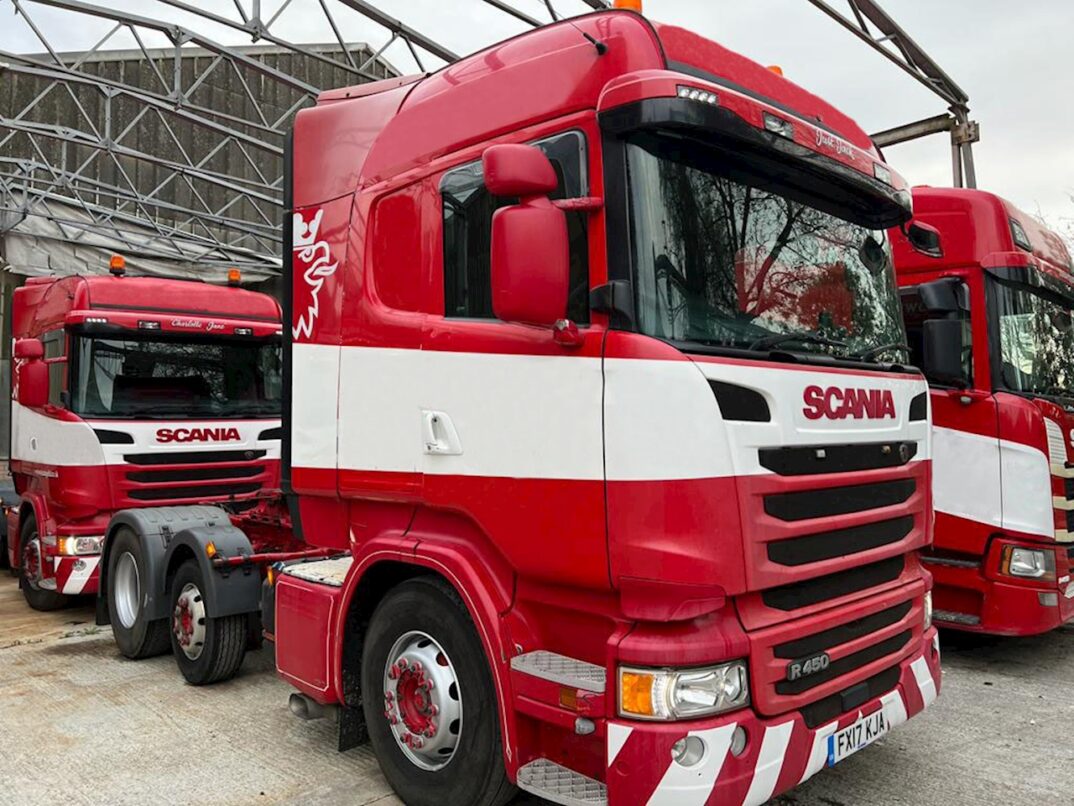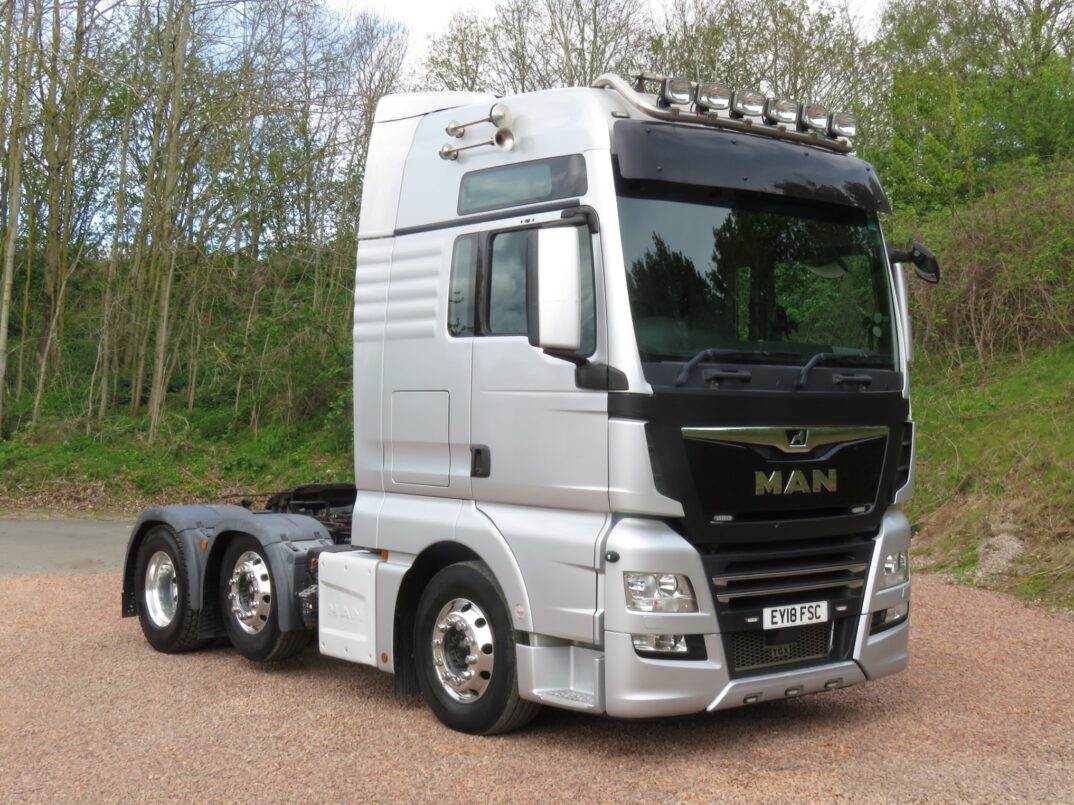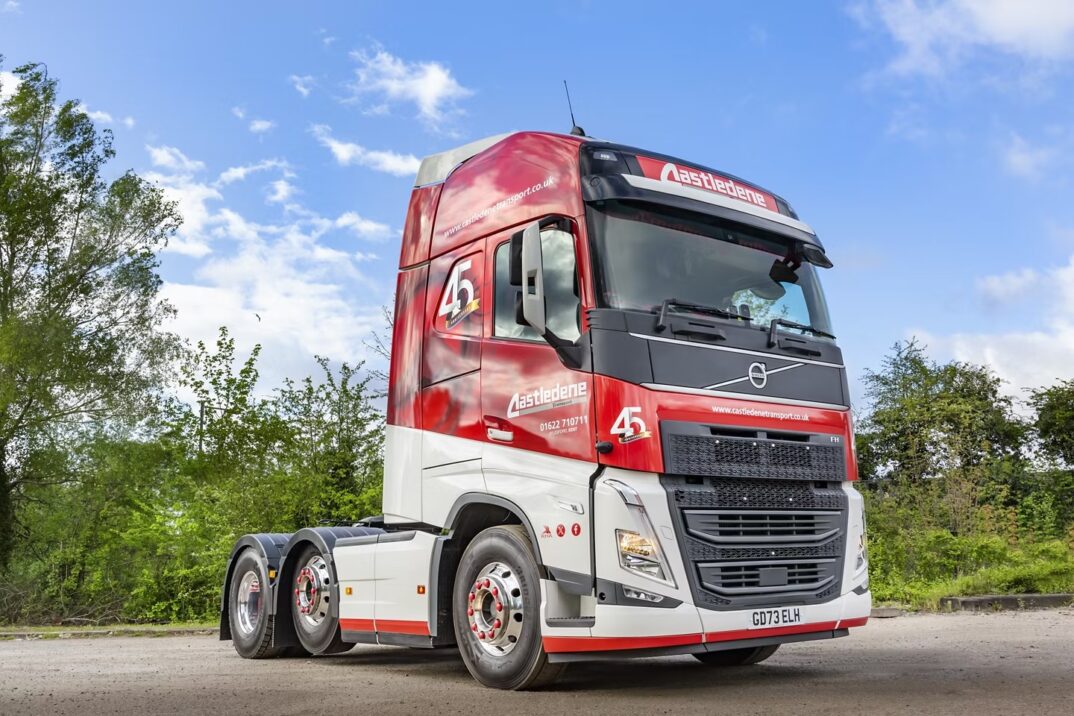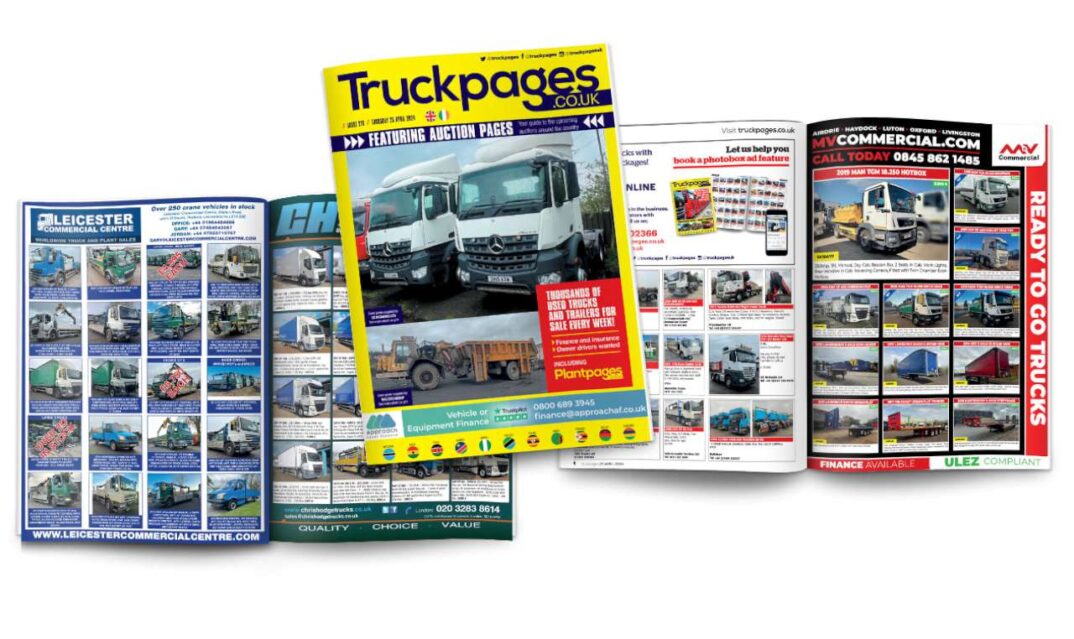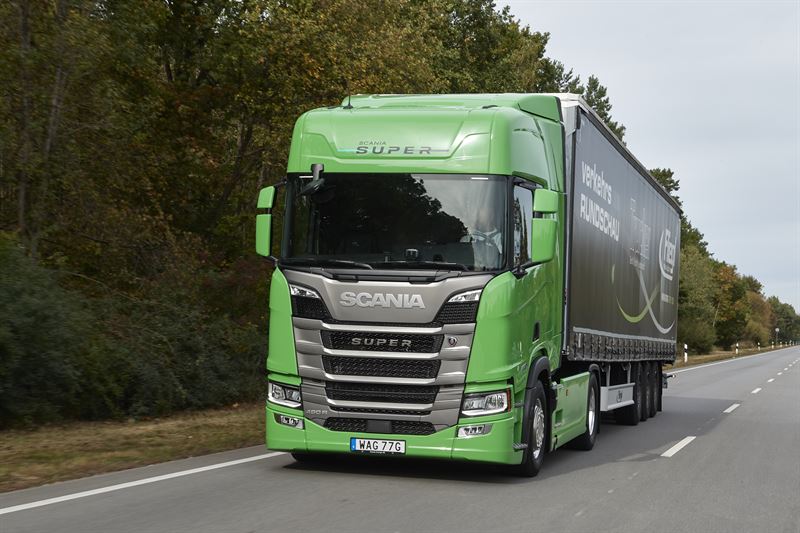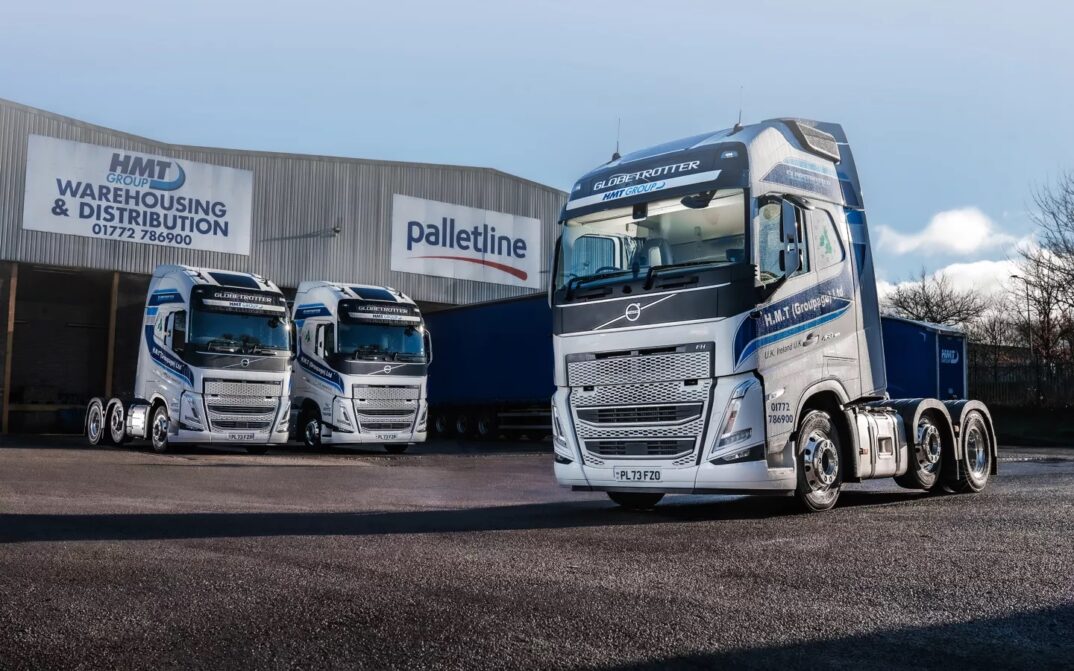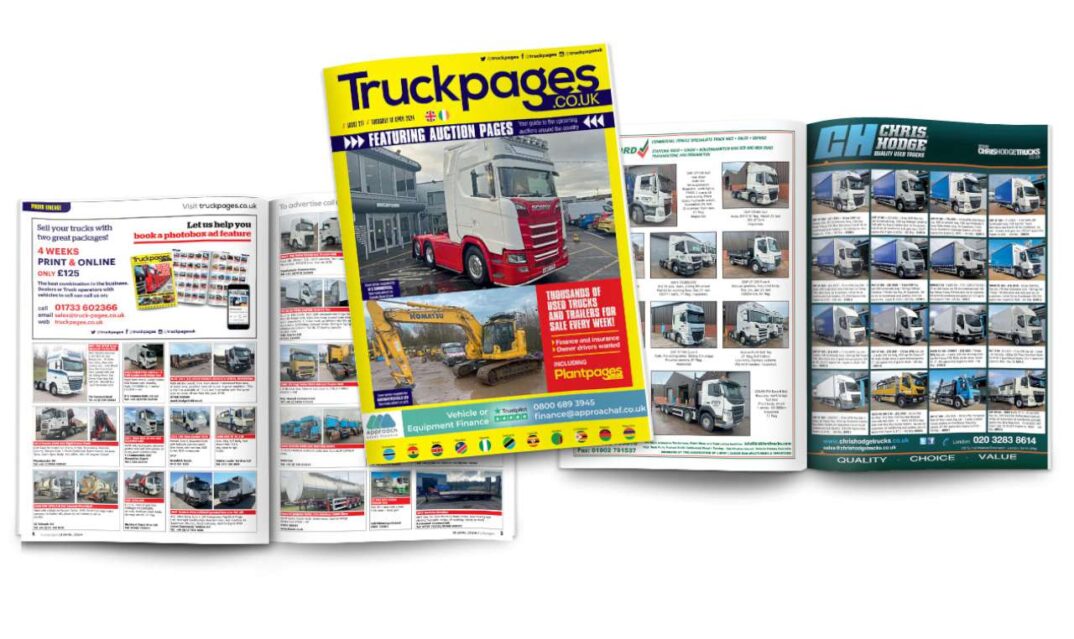SCANIA G450, CHOICE... HIGHLINE HIGH ROOF SLEEPER CAB, 2 PEDAL SEMI AUTO GEARBOX, EURO 6, FULL AIR DEFLECTOR KIT, 6X2 TRACTOR UNITS, AVAILABLE NOW!!!
Tractor Units for Sale (1065)
We list thousands of tractor units for sale at Truckpages, from sellers across the UK. Since tractor units are the most popular types of truck on the UK’s roads, buyers of these trucks will always find a wide choice of tractor units for sale right here, in stock and ready for collection or delivery in the UK’s used truck market. We have plenty of Euro 6 tractor units for sale and older versions, suitable for export. Many of these are ex-fleet tractor units which means that you will have the peace of mind that they should have been maintained to a high standard. At Truck Pages we try to give you the information you need to find the right tractor unit for you. There are only six manufacturers to consider, but each of these comes with their own weaknesses and strengths – be it upfront price, dealer network, suitability for the role and availability. In addition to the brand of tractor unit there are three major areas to consider: i) Power output needed ii) Axle configuration iii) Cab dimensions. We go into more detail on each of these areas – check out the ‘More Tractor Units Info’ tab below. In our ‘Latest Tractor Unit News’ tab you can read about which brands have been bought and why the operators chose the truck they did – vital research for any truck buyer.
SCANIA G450, CHOICE... HIGHLINE HIGH ROOF SLEEPER CAB, 2 PEDAL SEMI AUTO GEARBOX, EURO 6, FULL AIR DEFLECTOR KIT, 6X2 TRACTOR UNITS, AVAILABLE NOW!!!
For Auction at Protruck, Belton, Doncaster on 2024-05-08
For Auction at Protruck, Belton, Doncaster on 2024-05-08
*DONCASTER* CLASSICSPACE CAB, A/C, MID LIFT, LIGHT WEIGHT AXLE, CHROME ALLOY WHEELS MoT: 2024-05-18* Price is Plus VAT * Reg No: KX17RXL * Seller: DIRECT COMPANY* Weekly auctions featuring stock...
Lot No: 3284 *DONCASTER* *VERY POOR STARTER* XLX CAB, A/C, SLIDING 5TH WHEEL, REAR VIEW CAMERA MoT: 2025-03-31* Price is Plus VAT * Reg No: NU15CPZ * No. of former keepers: 1 * Seller: DIRECT...
Twin Sleeper - Automatic Gearbox - Integrated Satellite Navigation & Phone System - Air Conditioning - Heated Drivers Seat - Fridge - 360 Degree Camera System - Near Side & Off Side Audible Lane Change - Near Side Vision Window - 3.9m Wheel Base - Aluminium Fuel...
Lot No: 40108.0 6.2m - BODY - LENGTH - Steer - Mid-Lift - CONFIGURATION - WITH - Air - SUSPENSION. , Loose Items:, KEY (177413)VAT Status: Commercial (plus VAT) MoT: 2024-09-30. DIRECT CONTRACT HIRE & LEASE COMPANY RK19KXW Lot no: 40108.0
2016 DAF CF85 FTP Euro 6 (Tested 02/25) - RIG 2073 - XLRTGM4300G097389
Lot No: 40123.0 6.4m - BODY - LENGTH - SteertMid-Lift - CONFIGURATION - WITH - Air - SUSPENSION. ~ Stereo: CD, Interior: Cloth, Air Con, Cruise Control, Sunroof: Yes, EML WARNING LIGHT ~1VAT Status: Commercial (plus VAT) MoT: 2024-12-31. WX16TTK...
*DONCASTER* SLEEPER CAB, A/C MoT: 2025-01-01* Price is Plus VAT * Reg No: BJ58BFA * Seller: DIRECT COMPANY* Weekly auctions featuring stock from Doncaster, Hemel Hempstead & Scotland. Viewing...
More Tractor Units Info
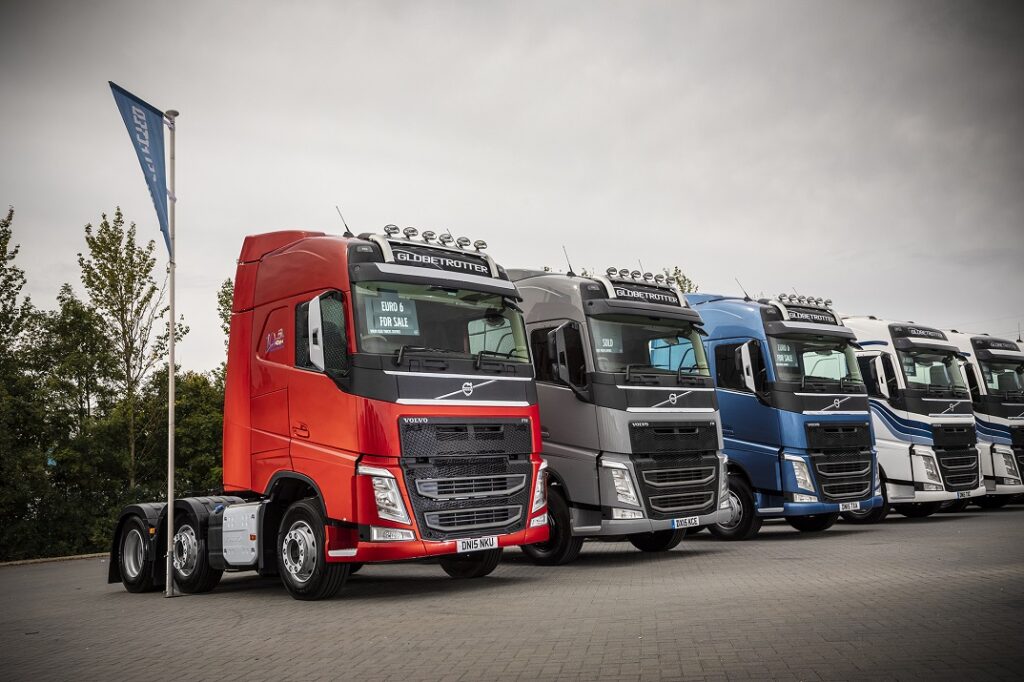
Tractor Unit FAQ
Tractor Units
The fifth wheel is the attachment on the rear of the tractor unit that couples the tractor unit (prime mover) to the semi trailer. The shape of the fifth wheel means that the trailer king pin is guided to the centre of the fifth wheel where it locks into place. The flat surface of the fifth wheel is greased to facilitate the swivelling required on the articulated unit and trailer. The ‘sliding’ part is not while the system is in use, but before attaching, the fifth wheel can be moved further forwards or to the rear depending on the length of the neck of the trailer – the longer the neck, the further back the fifth wheel needs to be to protect the rear of the cab and for optimum weight distribution across axles.
It is the fifth wheel that makes it a tractor unit as opposed to a rigid. Without the fifth wheel and the trailer that uses it to couple together, the tractor unit is of almost no use!
You will always find a fantastic choice of used tractor units for sale with sliding fifth wheels. Be aware that the sellers often describe them simply as ‘sliders’
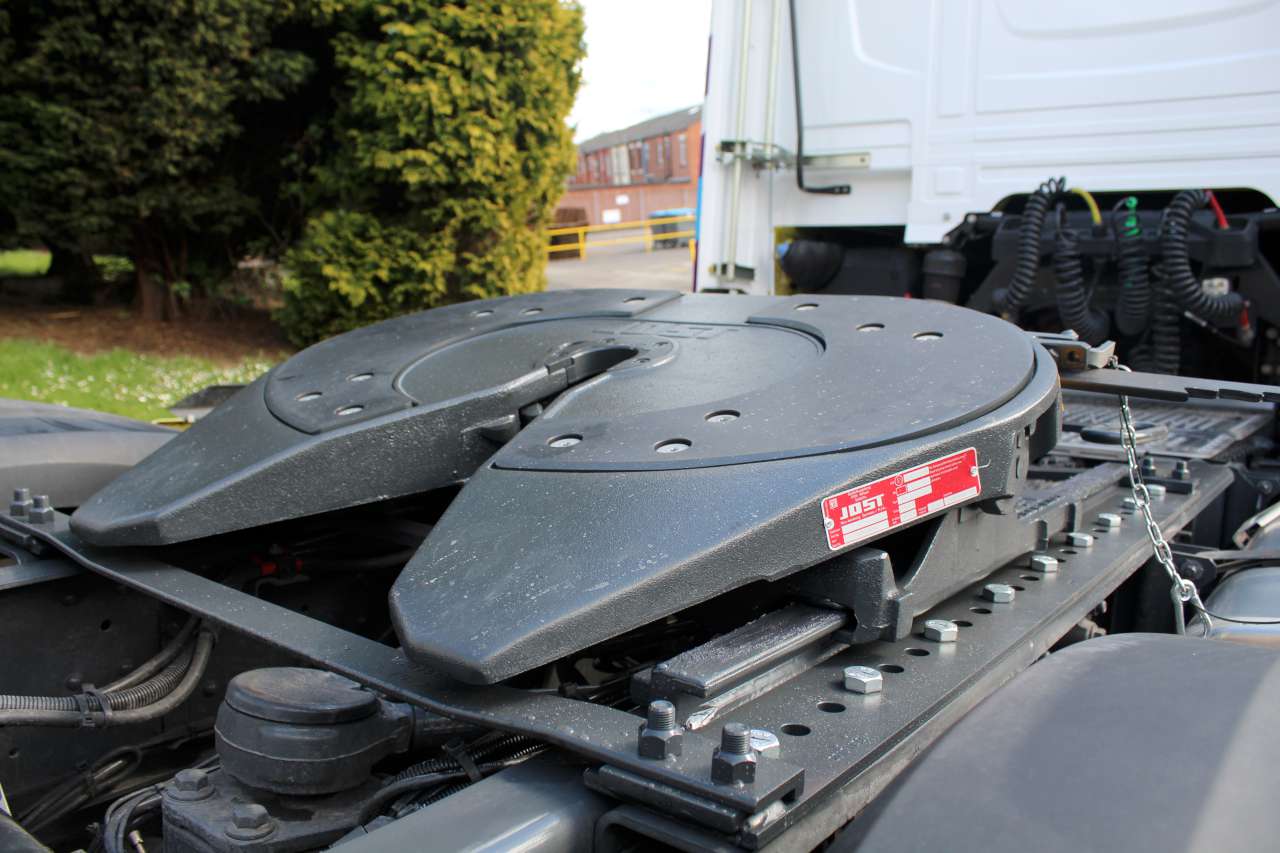
These terms only really apply to 6×2 tractor units. These trucks have three axles, but only one of them drives the truck. Let’s start off with a more simple example – a 4×2 unit – like most cars they steer at the front and drive from the rear. The drive axles will have two sets of wheels and tyres on as opposed to one set at the front.
Now if you add an extra axle to make the tractor unit a 6×2 and able to carry a train weight of 44 tonnes, you could put the extra axle between the two existing axles (mid) or behind the drive axle (rear).
Now for the ‘lift’ part. Unfortunately trucks have to run partially loaded or even empty at times. When this happens, the 6×2 tractor unit no longer requires the third axle to operate legally, (only needed between 4o and 44 tonne GTW). Using the extra axle adds to tyre wear as well as worsens the fuel economy, so it’s best to take it out of play.
A truck with a ‘Midlift’ or ‘Rearlift’ (also known as tag axle) can lift the third axle out of the way.
A further enhancement for the midlift axles is to be able to assist with the steering of the tractor unit when deployed. This is called a ‘Mid-Lift & Steer’ axle.
This totally depends on what weight you will be operating at, the distances, payload requirements and typical terrain. There is no point in paying over the odds on a higher horsepower tractor unit just for the sake if it. That said, if you don’t really need a 460hp model, but that is what is available in large quantities in the market, then why not opt for the higher power? There is no reason why not to if the 460hp makes sound financial sense – but make sure that the higher output is from the same sized engine. If you are changing from an eleven litre to a fourteen litre for the higher power it may have a negative impact on fuel economy, but it will definitely have an impact on payload – vital for those short haul bulk jobs, such as fuel and bulk tipping work. In general, the more important the payload, the smaller swept volume engine should pay operating dividends. As far as the terrain is concerned when specifying the best power output, for most UK routes, 420 to 460hp trucks are more than enough when operating at 44 tonnes gross train weight. For trucks that do have to go abroad or spend a lot of time on the UK’s hilliest routes, then an upgrade to a 500hp may seem suitable. As far as the top power 600hp plus trucks in the UK – then it should be for heavy haulage operation or huge egos (a.k.a. flagship trucks).
The answer isn’t ‘how tall are you?’ Everyone would like to have the most room possible in their working environment but there is a trade-off between the size of the cab and its weight/cost. For example, there is no point having a high roof sleeper cab with a flat floor on local tipping operations or for delivering fuel to petrol stations. In these payload intensive operations every kilo counts and 100 kilos for a taller cab would reap little benefit. Bear in mind that this is important not just for the differing size cabs within a manufacturer’s specific model range, but it may be the case that a totally different model may suit better. Look at DAF Trucks as an example. Sure, you can have a Super Space Cab XF (or XG+ nowadays) but you have to carry all of that cab around. Opt for the smaller CF (Soon to be XD) cab – especially the day cab – and you could be saving hundreds of kilos and drive a truck that is narrower and easier to drive locally. On the other hand, if you mean to attract drivers and they often have nights out in the cab, then the largest, most luxurious cabs make most sense. Think Topline, MegaSpace, Super Space Globetrotter XL and you won’t go far wrong.
Whilst nearly every truck manufacturer has a tractor unit range, it is historically the Scania R-Series that has topped the shopping list for UK tractor unit operators – especially the Scania V8. More recently, Scania has introduced the S-Series which will no doubt take over at the top of the list. The Volvo FH – especially the Globetrotter/Globetrotter XL is a desirable truck which has started to see some competition with the improved Mercedes Actros in recent years since the launch of the Euro 6 versions. Sitting centre stage are the DAF XF trucks – excellent value but are some put off by the ageing cab design, despite DAF’s efforts at modernising the 1990’s cab? Joining DAF is MAN with their TGX and TGS range of tractor units with the less favourable brands in the UK of Iveco’s Stralis and Renault Truck’s Range T bringing up the rear. These days this is less about the actual trucks themselves – nobody makes a bad truck these days – it is more about the reputation of the brand earned over the years. The transport industry has a very long memory!
In general, UK operators tend to opt for a 6×2 truck. Looking at sales statistics, there are more than seven ties the number of 6×2 tractor units sold in the UK than 4×2 units. This is because the gross train weight when used with a tri-axle trailer is 44 tonnes for a 6×2 and just 40 tonnes for a 4×2. Nearly all of these trucks have a mid-lift or rear lift axle which means that it is lifted out of use when not fully loaded over the 40 tonnes. So, if your operation could run at maximum weights, then it has to be a 6×2. However, if you are a rare UK operator that spends most of the time on the continent, then a 4×2 will be more sensible as only the UK has the extra four tonne allowance meaning the extra axle on a 6×2 would be a waste of space as you could only operate at 40 tonnes regardless. Other 4×2 tractor unit operators will be high volume, low weight operations (think feather pillows and polystyrene). There are some niche axle configurations for tractor units, but these are highly specialist. A 6×4 double drive tractor unit may be of benefit to you if you are operating locally and need additional traction on building sites – but you will lose payload and add cost to the truck, so make sure that it is really required. These 6×4 trucks are usually used with double reduction hubs on heavy haulage work. It is in this realm that you will find 8×4 tractor units as well. Sometimes the extra axle may be because the tractor unit is fitted with a particularly heavy crane as well. So, to summarise – if you will never have the need to run over 40 tonnes or, if you are mainly running abroad, then choose a 4×2, otherwise a 6×2 should be your choice of tractor unit.
How Truckpages can Help
Using Truckpages you can find all kinds of tractor units for sale from all manufacturers and all cab types. From a 4×2 day cab urban artic to a High Roof 150 tonne heavy haulage tractor unit and everything in between. All makes, models and years are available – including Scania R and S Series, Mercedes Actros and DAF XF. Tractor Units are the workhorse of the UK transport industry. They have been the biggest sellers in the UK for decades. Unlike Continental Europe where there is a penchant for drawbar outfits, the UK has a love of the ‘big rig’. To the uninitiated, a tractor unit is the front part of an articulated vehicle and semi-trailer combination. In the UK these trucks can carry a maximum train weight of 44 tonnes if they have three axles (more on this below…). Most truck manufacturers have a range of tractor units – we list them all for sale here at Truckpages.
The most commonly found tractor units for sale on these pages are from UK market leader DAF followed by Mercedes which is closely followed by Scania. Of the remaining manufacturers, Volvo Trucks has the most used tractor units on this site, followed by MAN, Iveco and Renault.
However, MAN come out on top in the specialist ‘Pet Regs’ tractor unit segment.
Tractor Units by Body Type
All tractor units are not the same. Firstly, there is the size of the cab. From a small day cabbed tractor unit for local distribution to a small sleeper cab for occasional nights out, to a double sleeper, medium roof to a flat floor, high roof sleeper for long distance and international work that has up to 2.25 metres standing room – as much as a house!
Specialist Tractor Units
These are your everyday machines – eth 4×2 able to make a gross train weight of 40 tonnes or the more common 6×2 tractor units, which can make up a gross train weight of 44 tonnes when used in conjunction with a tri-axle semi trailer.
Heavy Haulage Tractor Units
You can also get tractor units designed for heavy haulage. These giants can tow up to 150 tonnes gross train weight under a special license.
Pet Regs Tractor Units (ADR)
A specially equipped tractor unit is required to tow a tanker with flammables on bard. These must meet ADR regulations – more commonly in the UK these are called ‘Pet Regs’ tractor units.
More popular on the continent, you can get ‘low rider’ tractor units that have extra small wheels and tyres which tow an overheight trailer. As the bridges in the UK are higher than in mainland Europe, we see these less often here.
Shunter/Dock Spotter Tractor Units
Traditionally a shunter can be an old tractor unit that is no longer reliable enough to be sent out on the road, so it stays in the yard, untaxed, to move trailers around.
Increasingly companies are using specialist shunters – especially at ports when unaccompanied trailers are often sent meaning that these trucks with hydraulically lifting fifth wheels can more trailers around quickly without the need to retract the trailer legs.
These are used for inner-city deliveries and are often used with a single axle semi-trailer. Mainly used for distribution, they are also found on scaffolding work in city centres.
Tractor Units by Axle Configuration
4×2 Tractor Units
In bygone days and if you travel widely on the Continent, then 4×2 tractor units is all you would see. These are basically trucks with just two axles. The lack of a third axle means that they can legally carry just 40 tonnes when using a three-axle trailer in the UK.
In the UK these trucks are used only when the vehicle always carries such light, but bulky materials that they are physically full before they get to anywhere near their 40-tonne limit. Picture a truck full of polystyrene blocks, for example.
In days gone by, many supermarkets specified these 4×2 tractor units – they are physically a little smaller and cost less in road tax than the tree-axled counterparts. They were known in the used truck industry as ‘Supermarket Trolleys’ and were not very popular.
The problem is that these 4×2 tractor units are typically less desirable in the UK’s second-hand truck market. For this reason, an operator may opt for a 6×2 tractor unit, (see below) as they are easier to sell on their second life.
Many canny truck dealers will take these 4×2 tractor units and stretch the chassis, removing the fifth wheel (the hitch on the back that allows the truck to connect to the semi-trailer) and will fit a rigid body – perhaps a beavertail or crane body. This means that the operator will have a powerful truck for their application.
The other destination for these tractor units is overseas. Many trucks are exported to African countries where they drive on the left side of the road – therefore needing well-maintained right-hand drive used tractor units from the UK.
6×2 Tractor Units
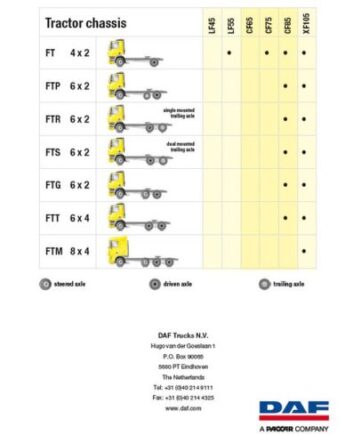
With three axles to spread the load, a 6×2 – or three-axle – tractor unit is able to carry up to the legal limit of 44 tonnes gross trail weight in the UK. There is still only one axle that does the driving in this example (the ‘6’ meaning six points of contact to the ground and the ‘2’ meaning the number of these that are powered and drive the truck forward.
Sure, the trucks are slightly heavier with the extra axle – let’s say an extra 1 tonne to 1500kgs, but this is more than compensated for by the additional 4 tonnes payload allowance.
These trucks should be better for the UK’s roads, as more axles means a better spread of weight. With a three-axle semi-trailer in both examples, the weight across each axle of a 6×2 tractor unit is lower than that of a 4×2.
There are a number of options how to add the extra axle. Check out DAF’s graphic which explains these.
You can have the axle placed before the drive axle, in the middle of the truck (Mid-axle) or it can go afterwards (rear axle). When not required (in other words when operating empty or only part-loaded, many of these axles are designed to lift up. This means that they are not in contact with the road and not getting worn out unnecessarily. These are called, somewhat unsurprisingly, ‘lift axles’. In the adverts for used tractor units in Truckpages you will see written ‘Mid-Lift’ or ‘Rear-Lift’.
6×4 Tractor Units
These are less common sights on the UK’s roads. They are similar to a 6×2 tractor unit, but the third axle is also driven. This makes the axle heavier, as it has an extra set of wheels and tyres plus a central differential and propshaft all adding to the weight.
The only reason to specify a 6×4 tractor unit is for added traction – in the case of building site operation – collecting excavators and loaders from construction sites. It would be very rare to see a 6×4 tractor unit with a lift axle – but not impossible.
The other use for the 6×4 tractor unit is in heavy haulage mode. These are trucks that have been designed specifically to be able to carry more than the 44 tonnes GTW. Some of these trucks can manage as much as 250 tonnes, but these would require more axles again!
8×4 Tractor Units
These are specialist trucks, normally seen in heavy haulage operation or decked out in military guise. If you see these trucks for sale in the used market, they will be expensive, as they are very expensive to buy new.
Revised Tractor Unit Cab Dimension Regulations Explained
It has been known for a long time that more aerodynamically shaped tractor units would be more fuel efficient and produce less CO2. The only issue is – and this is the reason that European truck cabs are shaped like bricks – is that because there are limits on overall length of the trucks, every centimetre of length is used to achieve the maximum load length. To use some of this length to improve aerodynamics would reduce the load length and could potentially increase CO2 output as more vehicle journeys would be required to carry the same amount of goods.
A change to the rules was needed to allow slightly longer trucks if the extra length is used to improve aerodynamics.
These rule changes have been a long time coming – back in 2014, EU legislation was agreed to permit up to 80 to 90cm longer cabs on tractor units to improve aerodynamic efficiency and safety for road users. The only issue was that there was a long stop implementation date of 2022 for the initiative.
The good news was that this was pulled forward to September 1st 2020.
There was a condition imposed on the truck manufacturers that the new designs for these longer trucks should meet the General Safety Regulation (2019/2144). This includes certain safety measures designed to make life safer on the UK’s roads.
Design Principles Overview
The new tractor Unit designs must have a rake (how much the top of the cab is set back from the bumper) of at least 3° from 1m to 2m high, and 20° of taper (how much narrower the front of the cab is than the rear) from the maximum width of the vehicle. Both of these changes have to be within 200mm of the front of the truck.
New Design Truck Models Available
The life cycle of a truck cab can span decades. Truck manufacturers do not develop a whole new cab readily as the basic design fundamentals do not change (until now).
2021 – DAF Trucks (XG & XF)
Unusually for DAF Trucks, they were first out of the starting blocks by a long way in terms of the introduction of a new cab with the revised dimensions.
DAF had not introduced a new truck can since 1987 so were due a new design. This coincided perfectly with the new rules and saw the launch of the new generation tractor unit cabs branded the XG, XG+ and the new XF.
2024 Volvo Trucks Aero Cabs
Unlike DAF, who brought out a whole new cab that followed the new guidelines, the existing Volvo FH cab has received an extension of 24 centimetres compared to the regular FH cab. According to Volvo, not only does this lead to improved aerodynamics which, in turn, give lower fuel consumption – it provides better driving stability in windy conditions.
Latest Tractor Units News
Dealer Service Prompts More Volvo Truck Sales
Kent-based Castledene Transport has taken delivery of a brand-new Volvo FH 500 with I-Save Globetrotter XL 6x2 tractor unit, sporting a special livery to celebrate the customer’s 45th anniversary. Supplied by Steve Moon, Truck Sales Director at MC Truck & Bus, the truck joins a 40-strong commercial vehicle fleet, of which 90 per cent is Volvo-supplied. The FH with I-Save will be tasked with general haulage work on a variety of routes across the UK. Matt Clarke, Operations Director, Castledene Transport, says: “The majority of our fleet has been Volvo for many years now, and we’ve come to really embrace…
Truckpages Issue 218 is out now
The keen-eyed amongst our truck buyers will see that the pair of Mercedes trucks on this week's front cover are not Actros units, but the beefed-up construction versions, the Arocs. Both 2546 models with 460hp, these are 6x2 models from 2015 with day cabs. This type of configuration doesn't appear every day, but are ideal for high payload operation for bulk work. They are available at G. C. Rickards - all the contact details are available on Page 14. Click to Read Page Turn Magazine Click Image to Read Use the form at the bottom of the page to add…
What’s The Most Fuel Efficient Tractor Unit in 2024?
This question is so complicated and operational and geographical factors will always influence fuel economy but the clever people at a couple of German truck magazines believe that they have the most comprehensive test around. The ‘Green Truck comparison test’ has been running fourteen years now and applies a clever formula that covers all the relevant aspects of being transport-efficient and sustainable: fuel consumption, average speed, used AdBlue volume and the weight of the truck (the lighter the better). The results should therefore give any potential long distance tractor unit buyer a steer in the right direction regarding the most…
Seven New Volvo FH Tractor Units for Distance Work
Palletline member HMT Group has extended its long-standing relationship with Volvo Trucks by welcoming seven new Volvo FH with I-Save 460 Globetrotter XL 6x2 tractor units. The deal ensures HMT Group’s articulated fleet remains exclusively Volvo. Supplied by Karl Davies, Customer Solutions Manager, Thomas Hardie Commercials, the trucks each feature a D13TC Euro-6 Step E engine, producing 460 hp and 2,600 Nm of torque. Mark Gallagher, UK General Manager, HMT Group, says: “We’ve been running Volvos on the fleet as long as I can remember, so we’re well versed in what the trucks bring to the table. The I-Save technology…
Truckpages Issue 217 is out now
Normal service is resumed as we feature a beautiful Scania V8 tractor unit for sale on this week's front cover. This example is from MV Commercial's stock and is the 2020 S Series 650S version with a rear lift tag axle in addition to all the bells and whistles including Kelsa bars, air horns, side skirts and beacons. If this is too rich for your blood, check out the MV advert on the outside back cover for a slightly older 2019 V8 Scania tractor unit - an R Series R520 with a midlift axle but still has all the bells…

